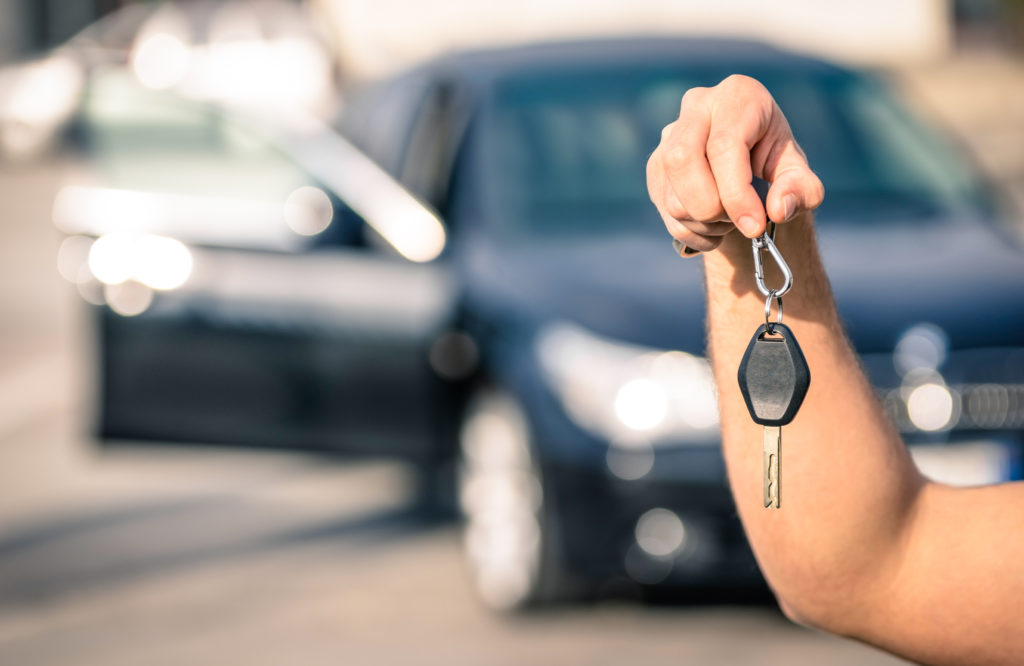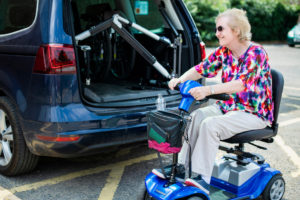Choosing the Right Car for You
Buying a car is a big decision and mistakes can be both costly and have adverse affects on your independence.
There are quite a few options to consider:
- What adaptions do I need?
- Should I choose a brand new or used car?
- Purchase or lease?
- Petrol, electric or hybrid?

Our questions below will help you to consider the most important points in making your choice.
This information is available in a ‘Buying a Car’ factsheet.
Buying A Car FactsheetHow do I decide what car to get?
Must be comfortable for you to drive
The most important thing is getting a car that you’re comfortable with so, whatever option you choose, try out as many as possible.
If you’re an experienced driver, you’ll already know what to look out for – how easy it is to get in and out, the position of the controls and whether you can reach them comfortably, whether you feel that the car is a good fit for you. Adapting controls and other features will all add to the final financial outlay you’ll be making.
If you’re new to driving, you can ask other beneficiaries about their experiences. Contact us if you would like to arrange this.
It is important to think about the length of time you spend in the car. If you make long journeys then a high level of comfort and a car that has good adjustable seats is very important. If you do short trips for shopping or to take the dog out, then space or a smaller and more economical engine might be more important than comfort.
Look at car reviews
You may also want to think about reliability, running costs and the cost of insurance.
If you are considering an electric car, the Trust has a knowledgeable and experienced volunteer who can talk you through the pros and cons – contact us and we will put you in touch.
You can read articles and reviews of disabled vehicles in Motability’s Lifestyle magazine, in motoring newsletters, on the Disability Now website and in Disabled Motoring UK’s monthly magazine.

Arrange a test drive and try out important features
Always try out the access to a vehicle in the showroom and also, where possible, test the loading of any equipment (e.g. wheelchairs) you use regularly. A tape measure is useful to take along with you. Remember to try out everything - closing the door once you are inside the vehicle and opening the rear doors and rear hatch and the windows. Can you reach the control to alter the seating position? Is the steering wheel adjustable? Even something like access to the fuel tank (being able to open and close the flap independently) are all important things to check out.
If you can’t take the car out for a test drive because you’ll need it adapted, then ask the dealership to take you out and sit in the front passenger seat so that you can observe where all the controls are located.
Is a new car the best option?
Buying a new car allows you to make decisions about the specifications before you get it.
Specifications vary greatly and are always changing, so it’s important to test all the cars you are interested in. Mobility Centres and the Mobility One Big Day Events may be able to help you with this.
Many new cars come with a range of modern technology already built in including, rain sensing windscreen wipers, automatic wing mirrors and cruise control as standard. Choosing a top of the range vehicle will give you additional features like automatic lights, an electric handbrake and parking sensors. Additional features come at a price but sales staff will talk you through the best deals and some of these “luxuries” may actually benefit your driving experience and minimise the need for additional adaptations. Lots of beneficiaries tell us they use their Health Grant to pay for the top of the range model as it provides the right level of comfort and options that work better for them.

Is a second hand car a better deal?
There are advantages to buying a second hand car – depreciation means that the value of a new car drops rapidly in the first few years, so you can often pick up a good car at a considerably reduced price when it is either an ex-demo vehicle (one the dealership have been using for test drives) or a car which is just a few years old. It is increasingly the case now that many people have private lease deals and change their cars more regularly, so bargains can be had. BUT – do your research first and make sure the car has a full service history, has no outstanding finance commitments and has not been involved in any serious road collisions necessitating major repair work.
Buying a used car won’t always work out cheaper – for example - if the car has already had adaptations made they may not be the right ones for you, so check the specification carefully before you decide.
Whether you buy new or second hand, remember to make sure that the vehicle will meet your needs and that any required adaptations can be made on the vehicle before you buy.
3 steps to choosing the right car for you

Think about your needs and what adaptations the vehicle must have, not all adaptations are suitable for some cars.

Visit a number of dealers, read reviews and choose your car that suits your needs and can be adapted.

Order your new car and adaptations.
Recommendations from a beneficiary
Having bought a car last year, there’s a few things from my experience that might be worth mentioning:
- Get quotes from different dealers – easy to do these days on the internet or by phone but you can only do it once you know exactly what specification you want and you are ready to order. On my previous car I got a massive discount by getting quotes from dealers in other parts of the country.
- Timescale – new cars may not be quickly available, e.g. I had to wait four to five months after ordering, then it was in Jim Doran for adaptations from December to March. It wasn’t a problem for me but it could be for other people.
- Special features in the model can be helpful, like keyless entry, voice controls on the heating, radio, sat-nav, push-button boot open/close, etc – they're usually only on the higher spec vehicle, but that will change over time.



